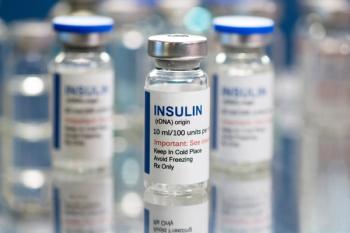
Potential New Treatment for Dry Eye Disease
Study finds that recombinant human lubricin can offer symptom relief for patients with dry eye disease.
Findings from a recent clinical trial suggests that recombinant human lubricin can improve signs and symptoms of dry eye disease more efficiently compared with sodium hyaluronate.
The trial, published by The Ocular Surface, examined the efficacy of recombinant human lubrin, an endogenous glycoprotein with anti-inflammatory, lubricating, and anti-adhesive activity for patients with dry eye disease.
The treatment, rh-Lubricin, is a recombinant form of Lubricin (PRG4) developed by Lubris BioPharma. Lubricin can be found in the joints as well as on ocular tissue and in other tissues. In the clinical trial, NCT02507934, 19 patients were randomized to receive recombinant human lubricin and 20 patients were randomized to receive a 0.18% sodium hyaluronate eye drop.
All patients included in the trial had moderate
Patients received the treatment twice per day for 7 days following a saline washout period. After the first 7 days, patients administered the treatment as needed for another 7 days.
Visual analog scale including foreign body sensation, burning/stinging, itching, pain, sticky feeling, blurred vision, and photophobia were primary endpoints, according to the study. Secondary endpoints include corneal fluorescein staining, Schirmer test, tear film breakup time, eyelid and conjunctival erythema, and number of administrations at day 14.
Investigators discovered that patients receiving lubricin had a 70% or more reduction in symptoms by the end of the trial. These patients also had significant improvements regarding symptoms of dry eye disease compared with patients receiving sodium hyaluronate, meeting the secondary endpoints.
No adverse events were experienced by any patients included in the study.
“Patients with dry eye suffer from a wide variety of symptoms impairing both their vision and quality of life and current treatments provide only limited symptomatic relief. These clinical results are encouraging as lubricin reduced every measured symptom, and also improved multiple objective signs of the disease. I am unaware of any other treatment that has shown such a consistent and sizable therapeutic effect, particularly when compared against another active compound,” said Edward Truitt, a co-author of the study and CEO of Lubris BioPharma. “We are looking forward to the next stage of clinical development.”
Newsletter
Stay informed on drug updates, treatment guidelines, and pharmacy practice trends—subscribe to Pharmacy Times for weekly clinical insights.












































































































































































































